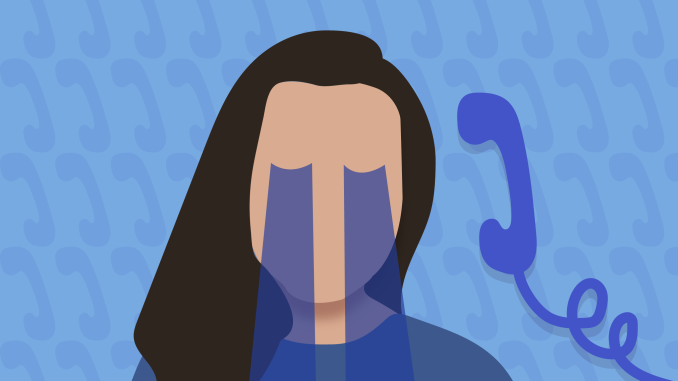
Many college students struggle with academic and personal challenges, which can impact their mental health. In 2020, one in five college students had thoughts of suicide, according to Verywell Mind, a mental health resource.
The National Suicide Prevention LifeLine will add a three-digit number, 988, beginning in July, The New York Times reported. This change aims to make the hotline more accessible by having a number shorter and easier to remember than the current number, 1-800-273-8255, while reducing the stigma surrounding suicide by making it as important as other emergencies.
The hotline will also have operators who can counsel callers and dispatch specially trained responders to reduce interventions from law enforcement and reliance on emergency rooms.
Because suicide is the third leading cause of death among college students, it’s important to have accessible mental health resources to help people experiencing hardships. Ensuring crisis centers are adequately staffed will make the 988 number’s implementation effective in providing assistance to as many people as possible.
However, mental health advocates are concerned the number of hotline staff won’t be able to meet the anticipated demand increase once this change is in effect.
The Substance Abuse and Mental Health Services Administration estimates a 25 percent increase in callers to the hotline for Fiscal Year 2022, with the new number operational during the last three months, ABC News reported.
In 2020, the hotline answered 85 percent of calls, 30 percent of chats and 56 percent of texts, according to SAMHSA.
Despite the hotline answering the majority of calls, some hotline users may not be comfortable calling due to phone anxiety or being unable to speak in a crisis. Improving the response rates of chats and texts ensures everyone is accounted for in hardships.
The hotline needs to have enough staff to cover the increase in calls, and use this opportunity to reduce barriers preventing people from using the hotline, said Michael McCloskey, a psychology professor.
“One of the things that will have to be thought through is if they make this change and people actually use it more, which is obviously the goal, that they will want to have enough people to be able to staff the line,” McCloskey said.
Calls to the hotline are usually received by the nearest crisis center and are routed to national backup centers if local centers can’t pick up. Currently, 20 percent of calls that should be answered locally are received by the national backup network, ABC News reported.
With many hotline calls sent to backup centers, delays could worsen if staffing for local crisis centers isn’t increased before the 988 number change. More funding should go to local centers so fewer calls get routed to backup centers and people in crises get immediate assistance.
Last December, the federal government announced they will allocate $282 million to SAMHSA for the 988 number change, with $177 million going towards backup centers and $105 million to local crisis centers. Because crisis centers are usually not federally funded, this is a big step towards ensuring the 988 number’s efficacy.
Local crisis centers are typically funded with state, local and private grants and as opposed to receiving federal funding.
Most users contact the crisis line, but there may not be enough people willing to sacrifice their sleep to respond to them, said Mia Stavarski, a senior art therapy major who participates in crisis counseling for the Crisis Text Line.
“That’s when feelings are usually low and like the body and the mind is usually tired so I think that’s the most concern of making sure there’s enough people there at night,” Stavarski said.
Many of the hotline’s crisis centers depend heavily on volunteer support like answering calls in a timely manner which can lead to shortages during peak hours.
Citlalli Tomas Baltazar, a junior neuroscience major, believes the three-digit number is a positive change, but the hotline needs to raise additional awareness so people will use the new emergency number.
“It is a good tactic, but they have to promote it,” Tomas Baltazar said. “Not many people know about the change.”
With the new number emphasizing the importance of mental health, it’s important for crisis centers to have enough staff and funding to meet the needs of callers in crisis and lessen the number of suicides each year.


Be the first to comment